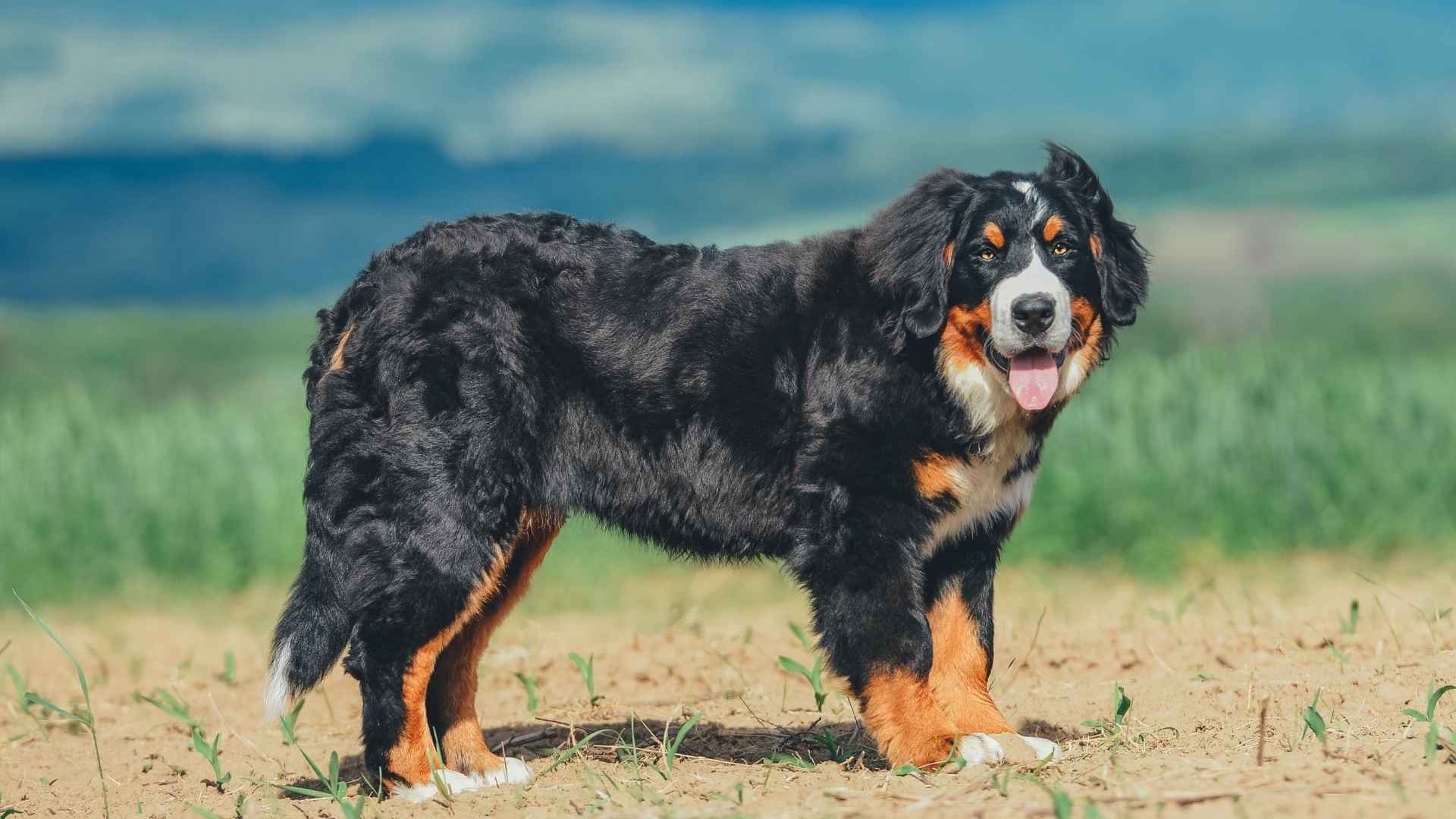Some dogs aren’t built for long lives, no matter how much you love them. It’s not about poor care or lack of attention—it’s in their DNA.
Certain breeds are born with health issues that slowly take over, like heart disease, joint problems, or cancer. Others just age quicker than their size suggests. This article isn’t here to scare you.
It’s here to prepare you. These dogs bring endless love in a short time. You’ll learn which breeds have the shortest lifespans and the reasons behind it—be it genetics, body size, or breathing issues.
If you’re thinking of getting one of these dogs, you deserve to know the truth from the start. Because while the memories will last forever, their time here may not. And sometimes, the more beautiful the bond, the shorter it lasts. Let’s talk about the dogs that leave paw prints far too soon.
Extremely Short-Lived Dog Breeds
1. Rottweiler

Rottweilers are bold, confident protectors—but their life expectancy, averaging around 8 to 10 years, surprises many. Despite their power, they’re vulnerable to several health concerns that accelerate aging. Bone cancer (osteosarcoma) and heart conditions like subaortic stenosis are among the top culprits, as highlighted in Lebanonsac.
One of the Most Loved, But Not for Long
As one of the most popular dog breeds in the U.S., Rottweilers are known for loyalty and courage. But this fame often masks the reality of their short lifespan. Larger size plays a role too—big dogs tend to age faster, and in Rottweilers, that’s paired with rapid growth, stressing joints and internal systems.
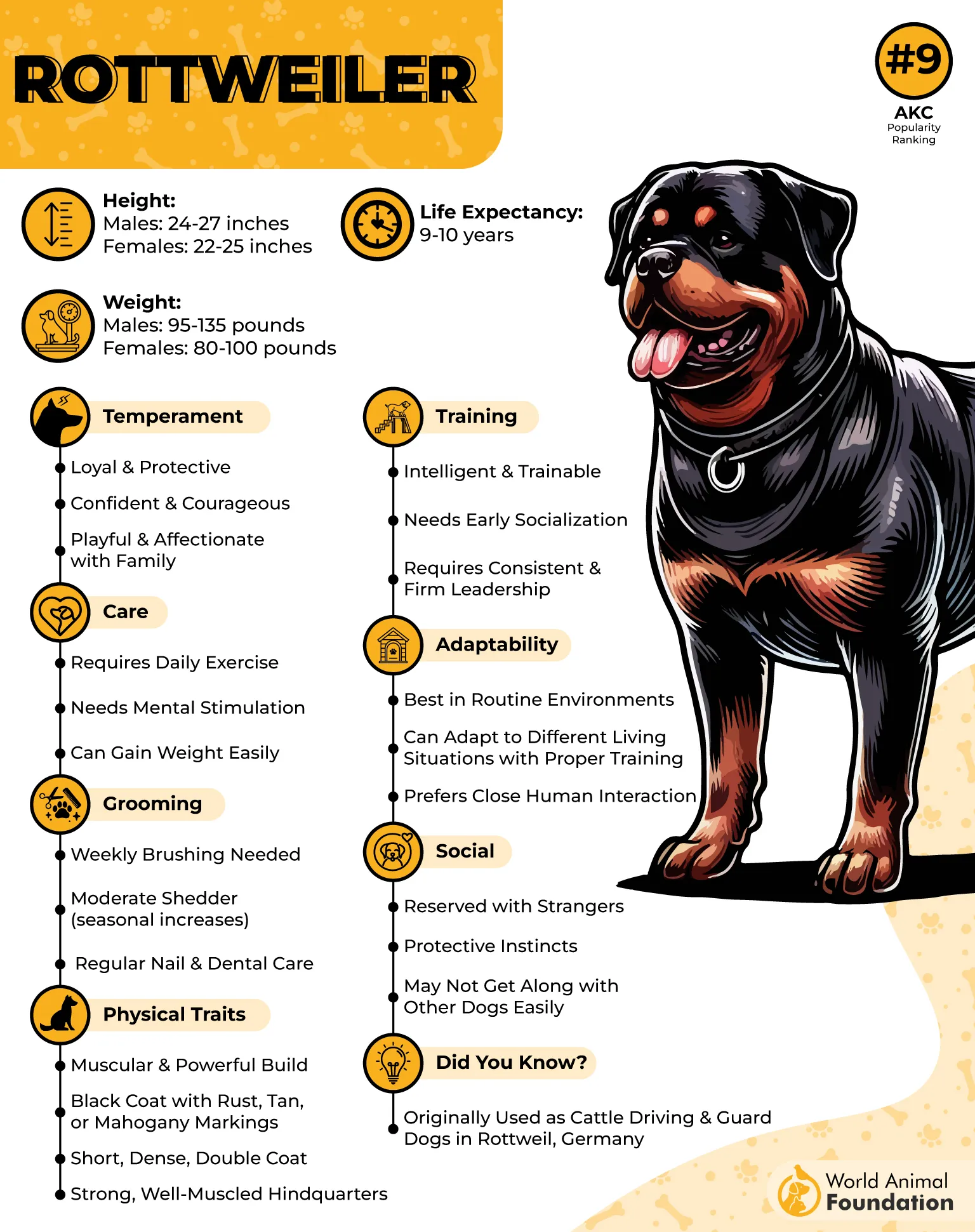
What Prospective Dog Owners Should Know
For prospective dog owners, it’s vital to understand that the long-term commitment is sometimes a shorter journey. These dogs thrive on structure, exercise, and clear leadership—but even with the best care, their years are limited. Knowing what signs to look for, like limping or fatigue, can help you act early.
Managing Health With Purpose
Routine vet checks, weight control, and targeted joint supplements may slow down common issues. Some breeders now conduct heart screenings and genetic testing to reduce risks. While you can’t change the clock, being proactive adds quality—and sometimes time—to your Rottweiler’s life.
2. Newfoundland
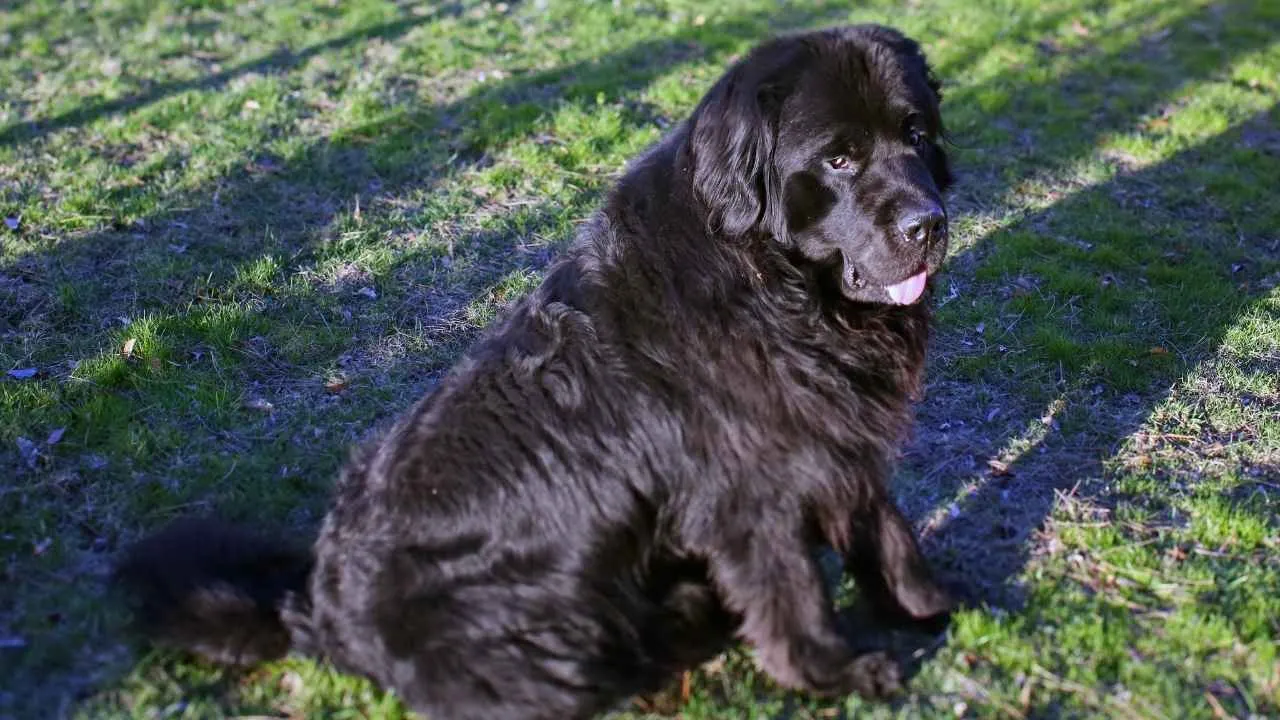
Newfoundlands are giants among large breeds, with hearts just as massive, but so are their health vulnerabilities. Their average lifespan ranges from 8 to 10 years, often cut short by canine hip dysplasia, a condition that severely impacts mobility. Early signs include difficulty rising or reluctance to climb stairs.
Behind the Fluffy Exterior
Beneath their thick, waterproof coat lies a predisposition to cardiac issues like subvalvular aortic stenosis, as written in Showsight Magazine. These common health concerns often go unnoticed until symptoms become severe—think fainting, coughing, or lethargy after mild exertion. Regular cardiac screening is recommended and is essential in this case.
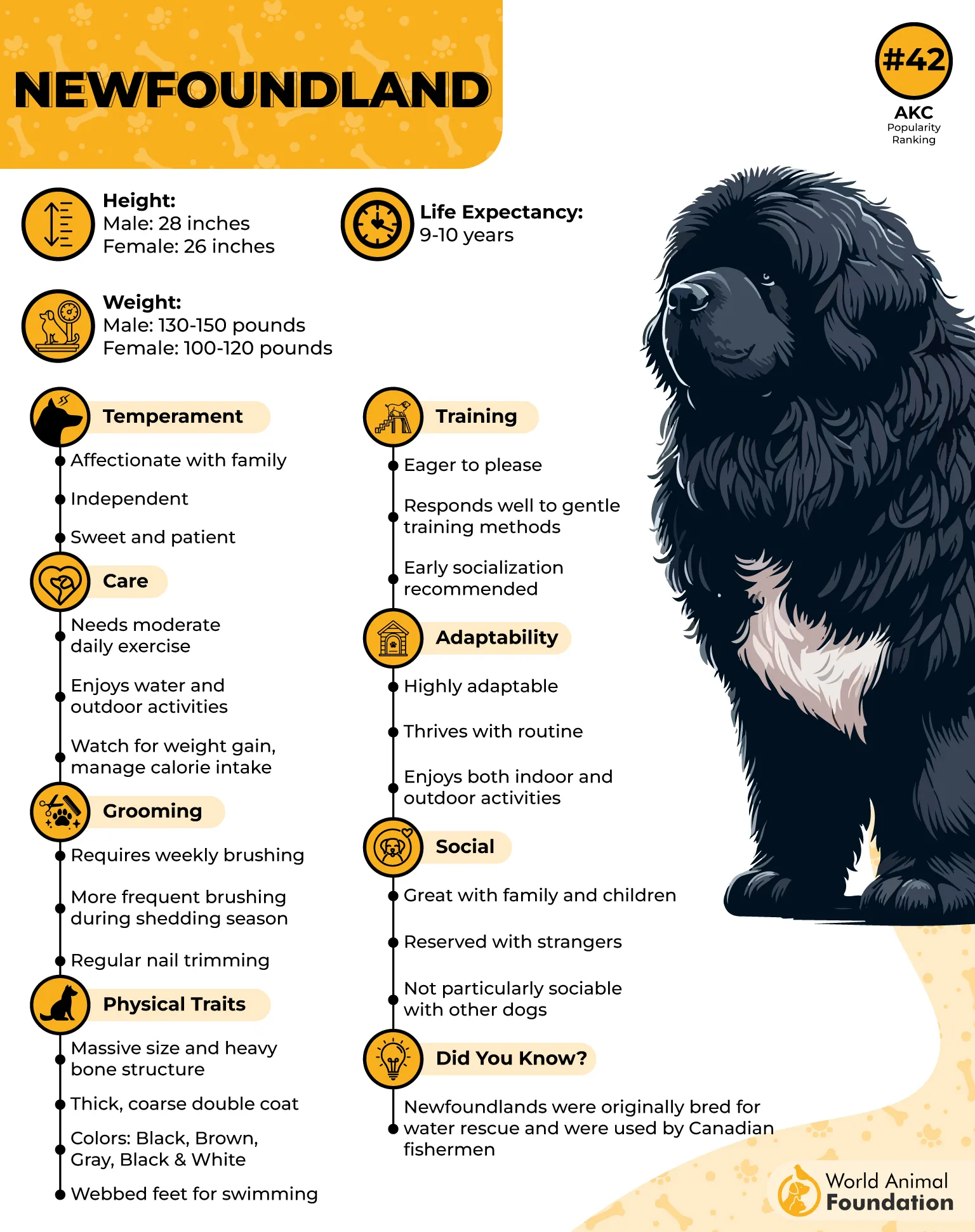
Nutrition Plays a Big Role
Feeding the right dog food matters more than most realize. Overfeeding can accelerate weight gain, putting stress on joints and the heart. A diet rich in glucosamine, omega-3s, and low in unnecessary fillers can help mitigate future complications. Controlled portions and joint-supportive ingredients are key.
A Gentle Giant with Heavy Needs
Though mellow and affectionate, the Newfoundland’s body demands structured care. Their slow metabolism and large size mean less physical activity can still cause internal wear. Swimming is often encouraged as low-impact therapy to preserve joint health while keeping them engaged and strong.
3. Saint Bernard

The short life expectancy of the Saint Bernard—typically 8 to 10 years—is closely tied to its sheer size. Rapid growth in early years often puts undue stress on joints and bones, setting the stage for arthritis and hip dysplasia. Their hearts also work overtime, making cardiomyopathy a common concern.
Big Dog, Bigger Risks
Compared to other dogs, Saint Bernards are more prone to heatstroke, bloat, and bone cancer—health problems that can emerge even before age six, as per Vet Help Direct. Their deep chests and slow metabolism don’t help, often leading to obesity when exercise is insufficient. It’s crucial to monitor them as they age.
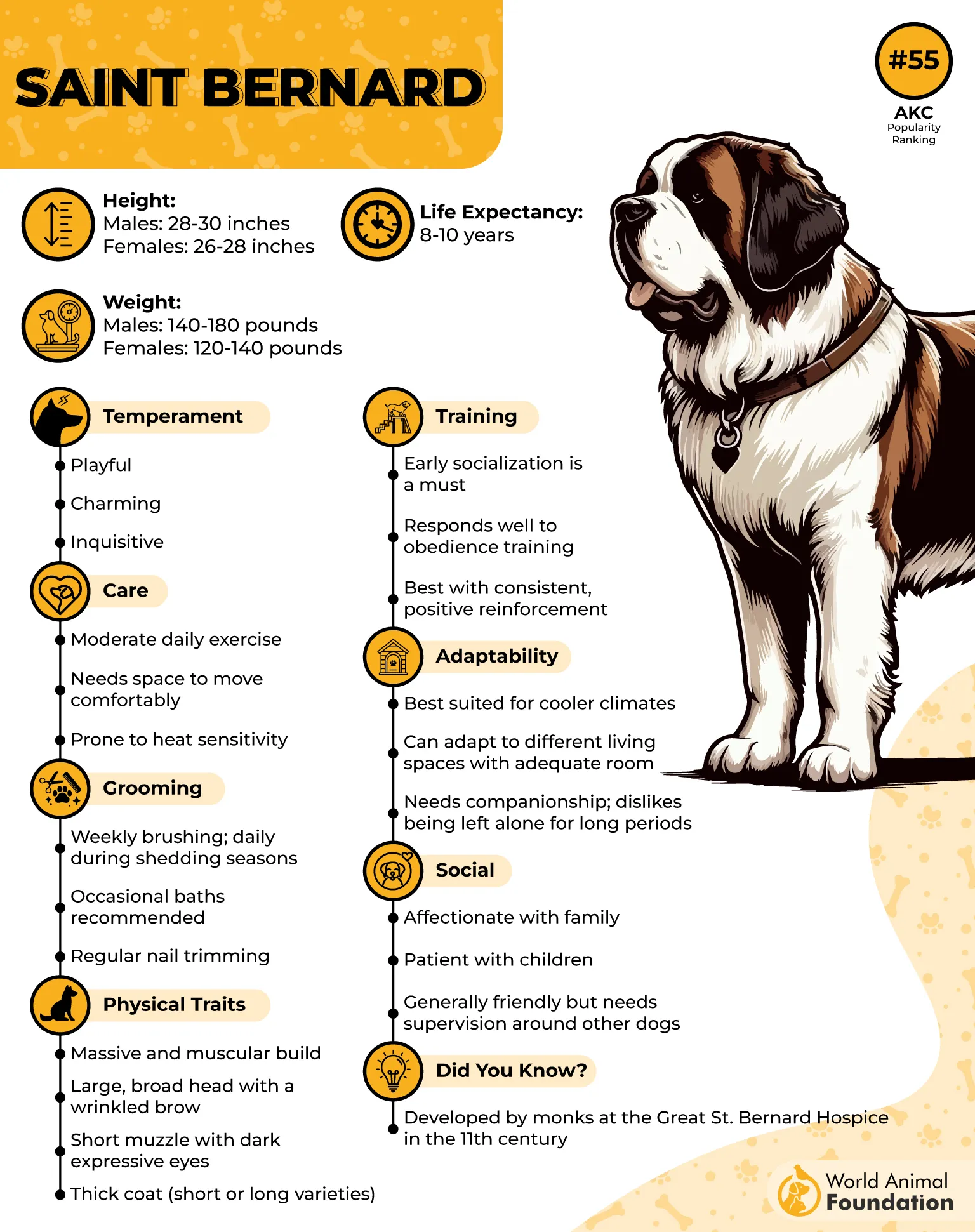
Diet Isn’t Just a Choice—It’s a Strategy
A balanced diet helps delay several inherited health problems, especially joint-related disorders. Food tailored to large breeds—low in calcium but high in joint-supporting nutrients—can make a big difference. Portion control is essential; overfeeding contributes to both bloat and weight-related strain.
A Word to Prospective Owners
For prospective handlers, knowing what shapes a dog’s life span is key. Saint Bernards need not just love but lifestyle management. Unlike some breeds, they demand a strict routine, from feeding to gentle walks. Unlike smaller dogs, their size alone makes minor issues escalate quickly.
4. Great Dane
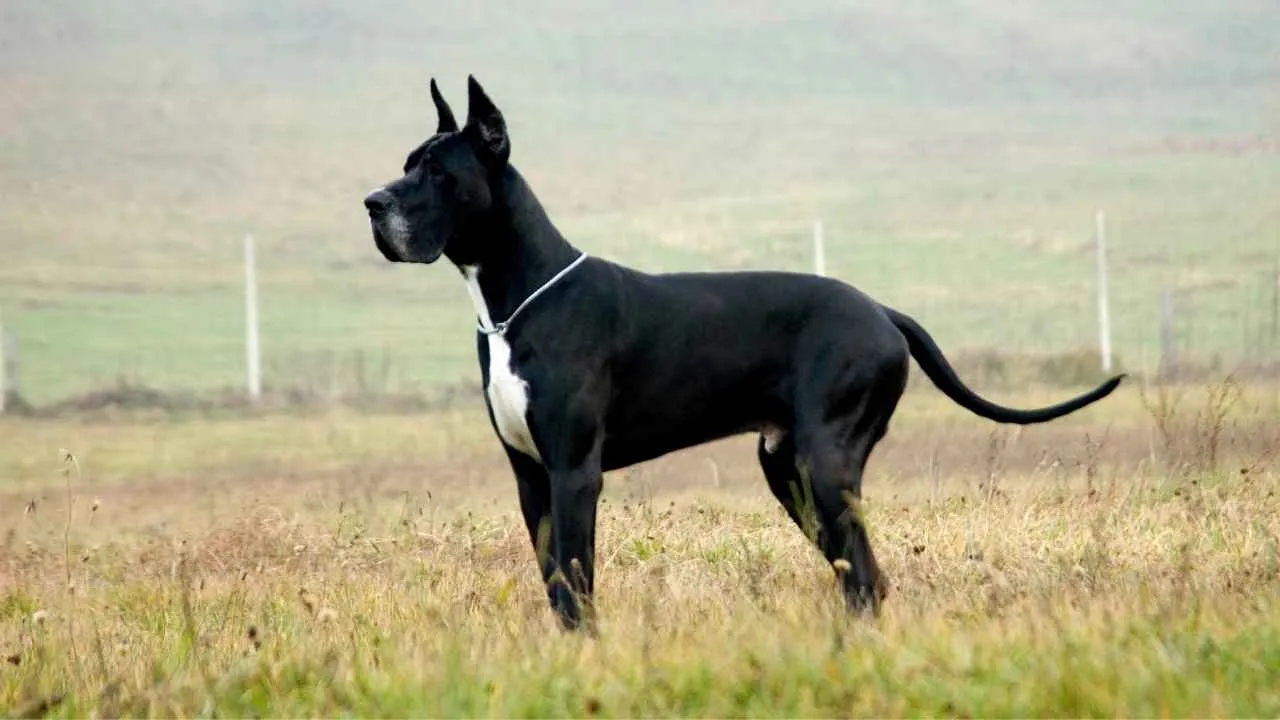
Great Danes may look majestic and commanding, but their lifespan typically falls between 6 to 8 years. Being among the tallest of larger dogs, they face intense physical strain on joints, bones, and internal organs from an early age. Rapid growth during puppyhood only adds pressure to their skeletal frame.
The Silent Threat of Internal Conditions
Dilated cardiomyopathy is the biggest concern—this heart condition can progress silently until it’s too late, as stated in UFAW. Bloat, or gastric torsion, is another emergency that Great Danes are uniquely prone to, with fatal outcomes if not treated immediately. These various health problems often stack up by middle age.
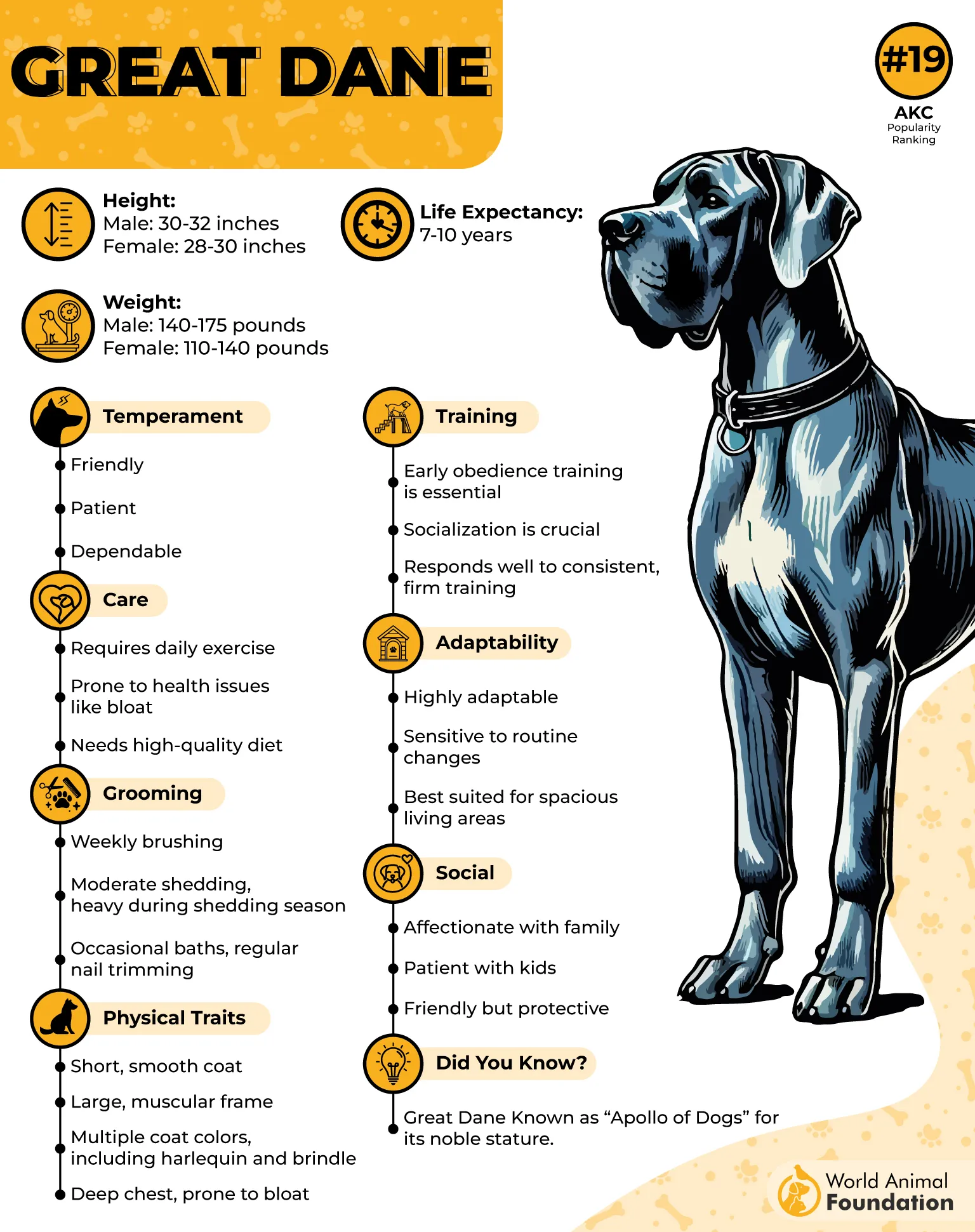
Every Individual Dog Is a Different Story
While genetics play a role, individual dogs with well-managed weight and early screenings often fare better. Some live past 9 with a strict diet and preventive care. Still, even within the same litter, lifespans can vary greatly depending on early signs, activity levels, and even stress management.
Building a Quality Life Despite the Odds
Owners are often advised to avoid strenuous jumping, offer raised feeders, and stick to scheduled vet visits. Great Danes don’t need extreme exercise but thrive on consistency and gentle walks. Focus on joint health, heart monitoring, and specialized large-breed nutrition to maximize the good years.
5. Bernese Mountain Dog
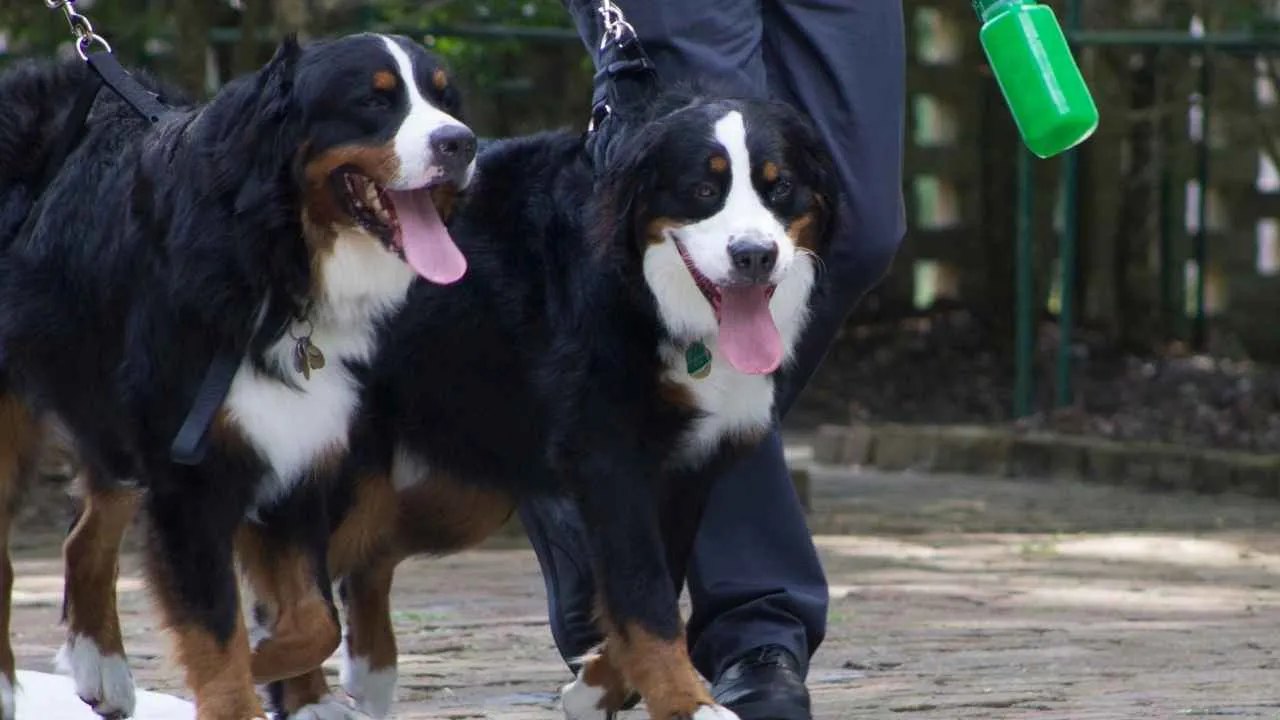
The Bernese Mountain Dog lives an average of just 6 to 8 years—a heartbreaking figure for such a loving breed. This short lifespan is primarily due to its high rate of fatal cancers like histiocytic sarcoma, which is genetically prevalent in the breed, as per the stats of Dog Cancer. Rapid aging compounds the risk of organ failure and arthritis early on.
Prone to Multiple Health Challenges
Aside from cancer, Berners are particularly susceptible to hip and elbow dysplasia, bloat, and progressive retinal atrophy. These issues often surface before age six, significantly impacting mobility and quality of life. Their dense coat also makes them prone to heat sensitivity, requiring careful seasonal care.
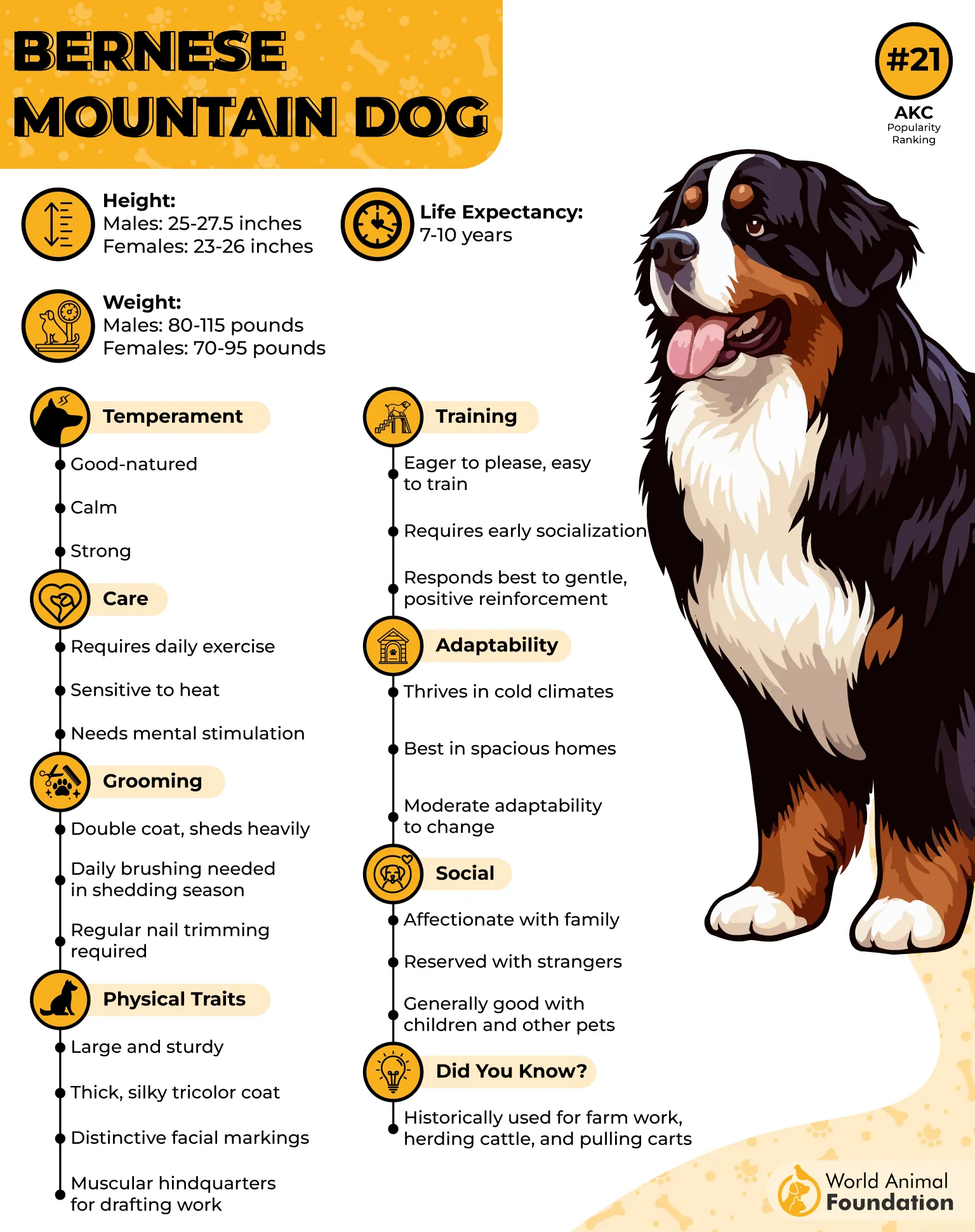
Genetics Plays a Heavier Role Here
While all large breeds age faster, what sets the Bernese apart is how heavily its lifespan is influenced by genetics. Even within responsible breeding programs, the incidence of cancer remains alarmingly high. Many Berners begin showing signs of decline by age five, even when raised on a clean diet and regular vet schedule.
Early Monitoring Is Crucial
Early screening for cancer markers and orthopedic issues is non-negotiable. Vets often recommend X-rays as early as two years old to track joint development. Owners should be alert to sudden lethargy, limping, or unexplained weight loss—these may signal issues far more serious than they appear.
6. Bullmastiff
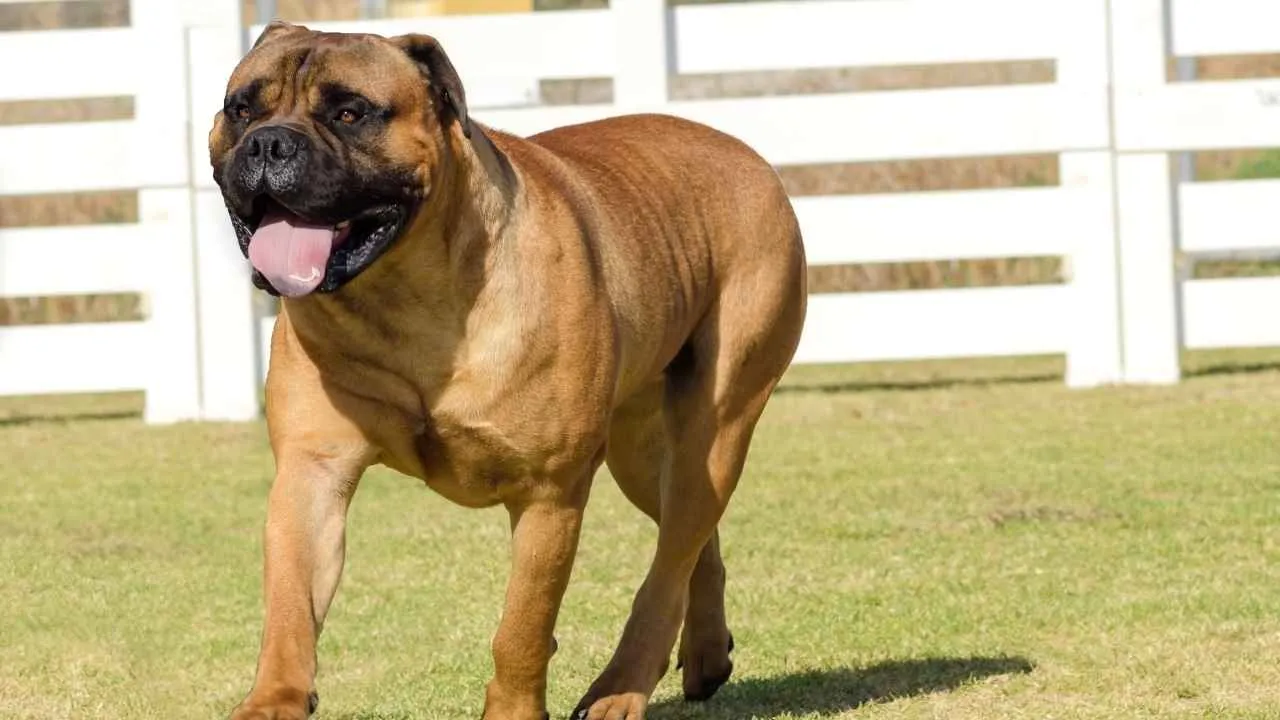
Bullmastiffs may look like living tanks, but their average lifespan hovers around just 7 to 9 years. Their massive build accelerates joint wear and tear, often leading to painful hip or elbow dysplasia by middle age. Their fast growth rate also strains the skeletal system early on.
Common Health Complications to Watch
Gastric torsion (bloat) is a silent and sudden threat, particularly after meals or vigorous activity. They’re also prone to lymphoma and hemangiosarcoma—aggressive cancers that can progress rapidly. Heart issues, especially subaortic stenosis, quietly shorten their life unless diagnosed early.
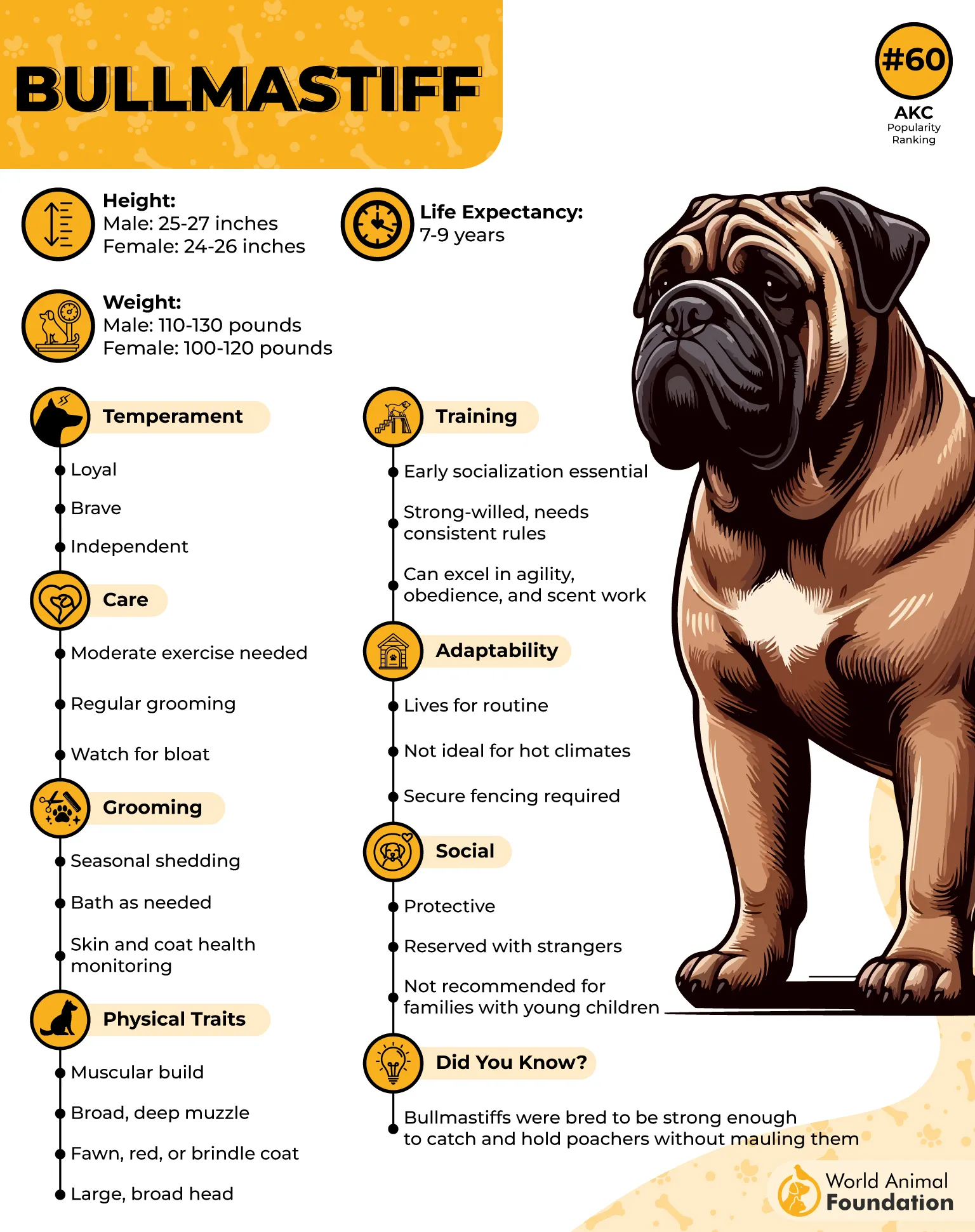
Breathing and Heat Tolerance Issues
Despite not being fully brachycephalic, Bullmastiffs have shortened snouts that can restrict airflow. This makes them sensitive to heat and prone to snoring or sleep apnea. Even mild exertion in warm weather can lead to overheating, which is dangerous for this breed.
Managing Health to Maximize Years
Because of their high susceptibility to joint and heart issues, weight management is crucial. Early screening, moderate daily walks, and feeding from elevated bowls can help prevent bloat. Reputable breeders now test for genetic markers to reduce inherited disease risks.
7. Mastiff
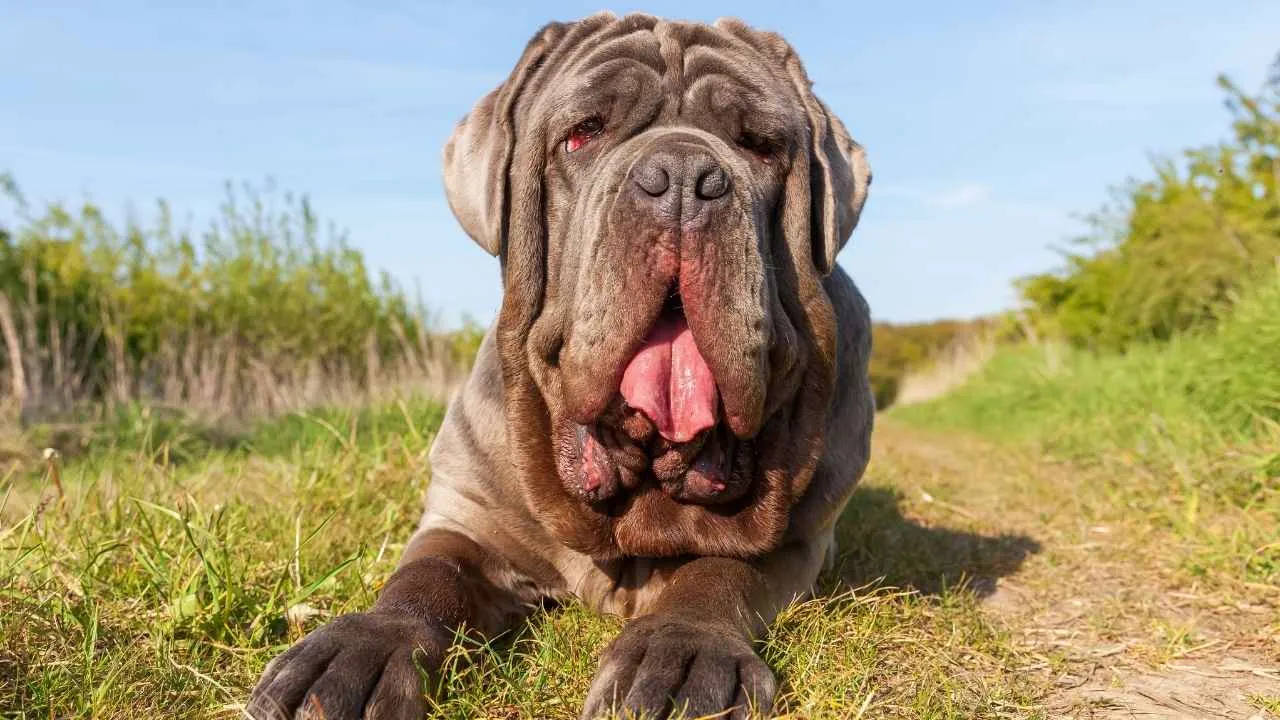
Mastiffs typically live just 6 to 10 years—an unfortunately short span for such devoted companions. Their massive size accelerates cellular aging, putting extra strain on their heart, joints, and lungs. Bloat (gastric torsion) is particularly common and can become fatal within hours.
Common But Overlooked Health Struggles
Beyond orthopedic issues like hip and elbow dysplasia, Mastiffs are prone to heart conditions like dilated cardiomyopathy. Their sheer body mass often leads to breathing difficulties and overheating, especially in warm climates. Many also develop arthritis early, impacting their quality of life.
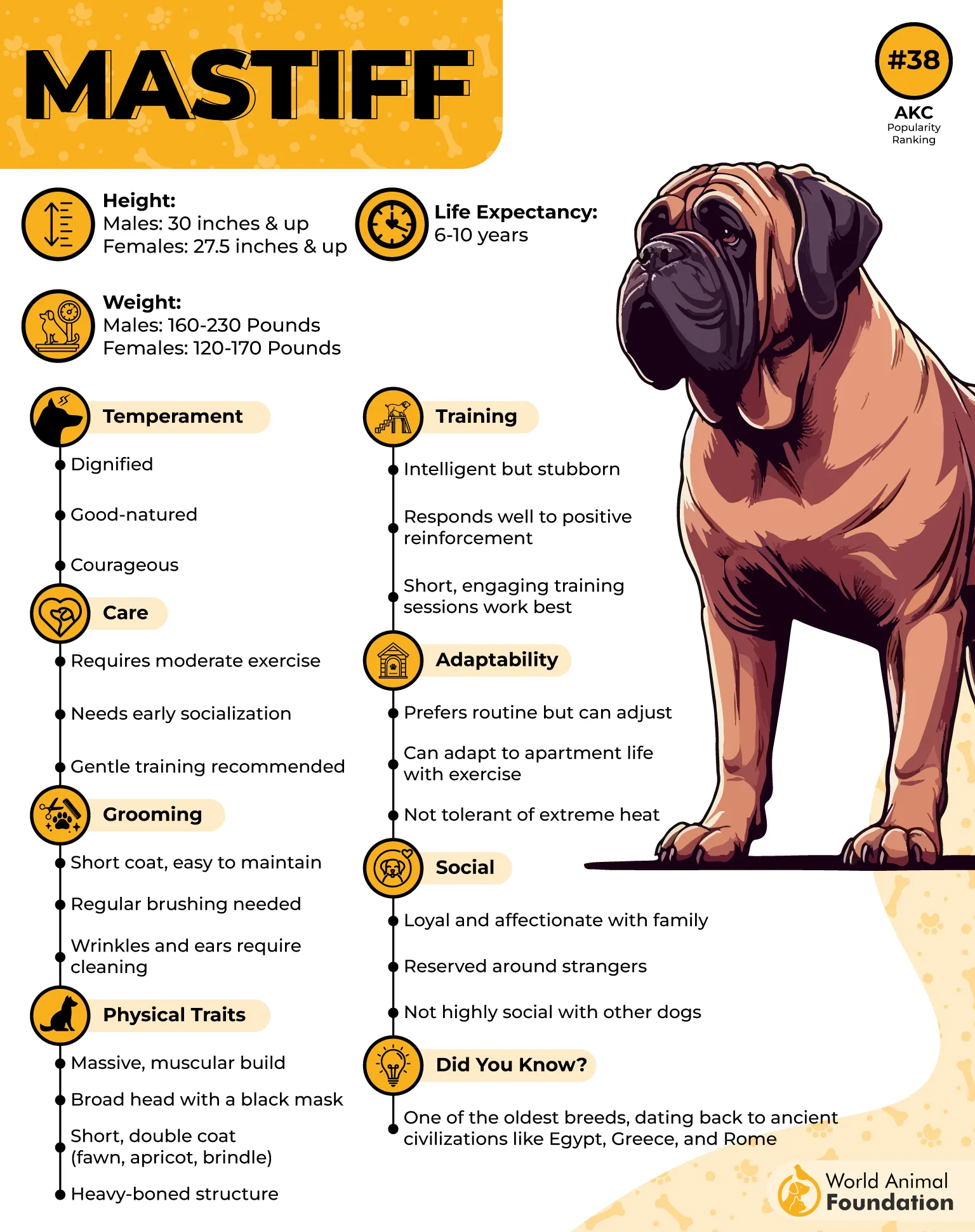
Why Early Vet Screenings Matter
Since many issues are genetic, health screenings for parents are essential if you’re choosing a pup. Annual cardiac ultrasounds, X-rays for joint health, and weight management are non-negotiable. Many Mastiffs suffer in silence—limping or subtle fatigue are red flags.
Everyday Care Can Make a Difference
Preventive care makes a noticeable impact: slow-feed bowls can help reduce the risk of bloat, and orthopedic beds ease pressure on joints. Controlled exercise—not overexertion—is key, especially during growth. A tailored, vet-approved diet helps support their massive frame without overburdening it.
Conclusion
Losing a dog is never easy, especially when you know from the start that your time together may be brief. While most other dogs live well into their teens, these breeds face challenges that make aging quicker and more complicated. It’s not your fault, and it’s not theirs—it’s just biology.
Still, even short lives can be full ones. With the right diet, early screening, and consistent veterinary care, you can help your furry friend enjoy the best version of their journey. Large or small, purebred or mixed-breed dogs, each dog comes with its own set of needs and potential health issues.
Whether you’re choosing one of these gentle giants or considering small dog breeds instead, knowledge is your strongest ally. Routine, love, and regular veterinary check-ups go a long way.
Because the goal isn’t just more time—it’s better time. And in the end, every second matters more than we realize.


